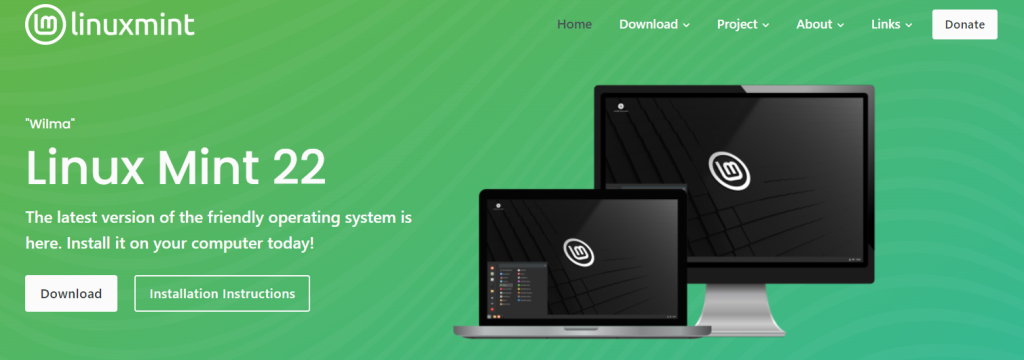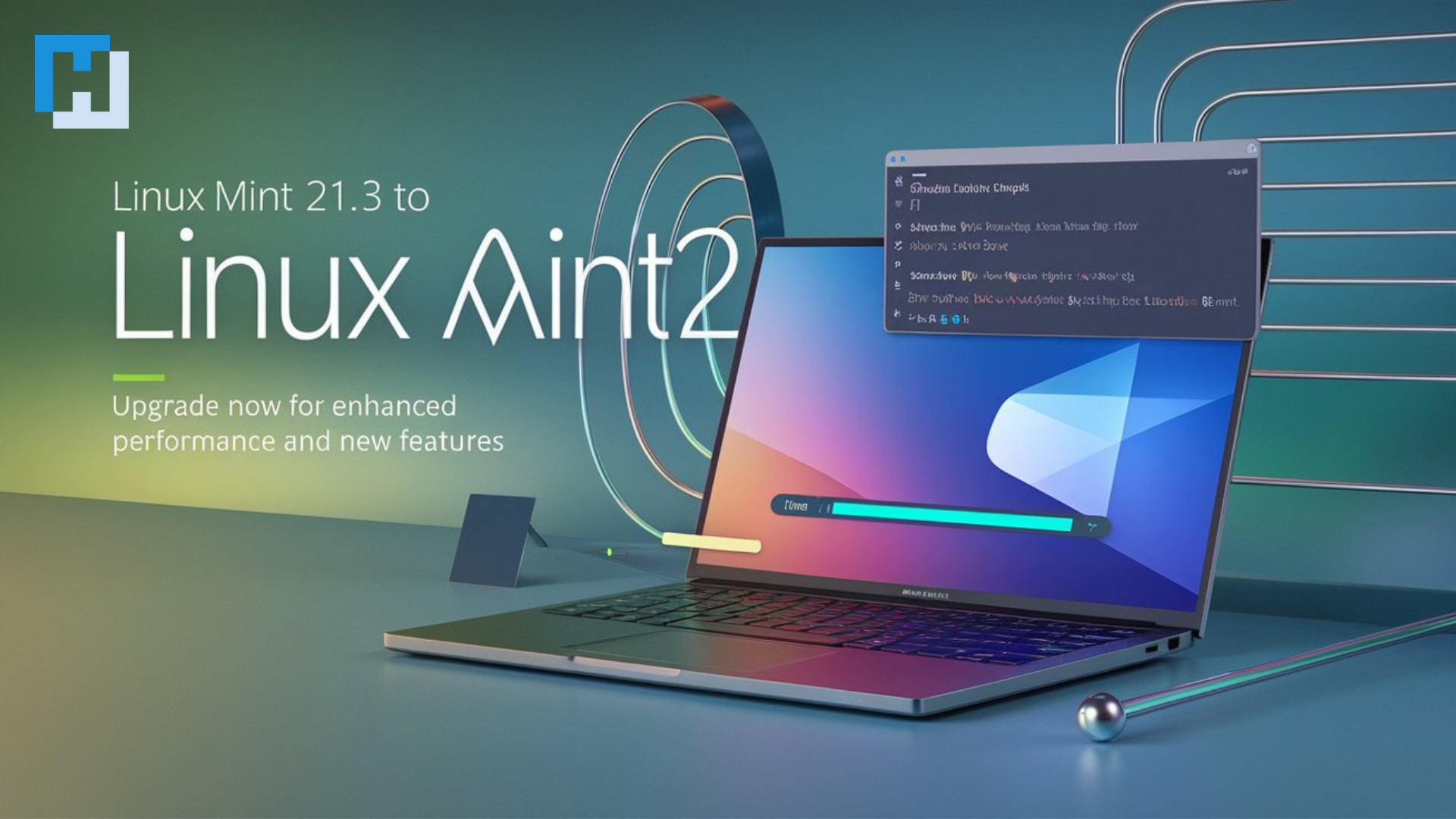Upgrading your Linux Mint operating system is an essential task to keep your system secure, up-to-date, and equipped with the latest features. If you’re using Linux Mint 21.3 and wish to upgrade to the next version, Linux Mint 22, this comprehensive guide will walk you through the entire process. Let’s dive into the step-by-step process of upgrading Linux Mint 21.3 to Linux Mint 22.
Before proceeding with the upgrade, it’s important to back up your system, ensure compatibility, and follow a structured approach to avoid potential issues. In this article, we will cover the preparation steps, the upgrade process, and some troubleshooting tips.
Preparation Before Upgrading Linux Mint

Upgrading your operating system can be straightforward, but there are a few key things to prepare to make sure the process goes smoothly. Following these preparatory steps will save you from headaches later on.
Backing Up Your Important Data
Before making any major changes to your system, especially an OS upgrade, it’s crucial to back up your data. While the upgrade process is generally safe, there’s always a small risk that something could go wrong, potentially leading to data loss. Here’s how to safely back up your data:
- Backup Personal Files – Use external storage devices (like an external hard drive or USB flash drive) to back up essential files, such as documents, media, and configuration files.
- Backup System Settings – Linux Mint provides a built-in tool called “Timeshift” that allows you to create system snapshots. Timeshift will let you restore the system to a previous state in case something goes wrong during the upgrade process.
- Open Timeshift from the menu and follow the on-screen instructions to create a snapshot.
- Store the snapshot on an external storage device if possible.
Check for System Compatibility
Upgrading from Linux Mint 21.3 to Linux Mint 22 may bring new features, but it also comes with new system requirements. Although Linux Mint generally remains lightweight and efficient, newer versions may require better hardware or have changes in driver support.
- Check Hardware Requirements – Compare your system’s specs (CPU, RAM, disk space, etc.) with the minimum requirements of Linux Mint 22. For most modern systems, this shouldn’t be a concern, but it’s still good to verify.
- Update Installed Packages – Before starting the upgrade, it’s essential to ensure all installed software is up-to-date. To do this, open a terminal and run the following commands:
sudo apt update
sudo apt upgrade
sudo apt dist-upgrade- Purge Unnecessary Packages – Removing unnecessary packages can help prevent potential conflicts during the upgrade. Use the following command to remove any unneeded packages:
sudo apt autoremoveEnable Recommended Repositories
For a smooth upgrade, make sure you have enabled the necessary repositories:
- Open the Update Manager.
- Go to Edit > Software Sources.
- Under the Linux Mint Base section, make sure that the appropriate repositories are selected, including the ones for Linux Mint 22 (if available).
- You should also ensure that your Main and Base mirrors are up-to-date and fast for your region.
Upgrade Linux Mint 21.3 to Linux Mint 22
After completing the preparation, you’re now ready to upgrade your system Linux Mint 21.3 to Linux Mint 22. The upgrade process can be done in two ways: through the command line or using the graphical upgrade tool. In this section, we’ll discuss both methods.
Method 1: Using the Graphical Upgrade Tool
The Linux Mint team provides a graphical tool called the Mint Upgrade Tool, which makes upgrading simple.
Step 1: Launch the Mint Upgrade Tool
- Open the Update Manager from the Mint Menu.
- In the Update Manager, go to the Edit menu, then click on Upgrade to Linux Mint 22.
- The system will check for updates and display a notification that a new release (Linux Mint 22) is available.
Step 2: Install the Upgrade Tool
You may be prompted to install the Mint Upgrade tool if you haven’t done so already. Run the following command in a terminal to install the tool:
sudo apt install mintupgradeStep 3: Simulate the Upgrade Process
Before proceeding with the actual upgrade, it’s a good idea to simulate the upgrade process to ensure everything will work properly. To do this, open the terminal and run:
sudo mintupgrade checkThis command will check for potential issues, such as broken packages, dependency conflicts, or unsupported software. If any problems are found, the tool will provide recommendations on how to resolve them.
Step 4: Download the Upgrade Packages
Once the simulation is complete and you’re confident the upgrade will proceed without issues, you can download the upgrade packages by running:
sudo mintupgrade downloadThis command will download all the necessary packages for the upgrade to Linux Mint 22.
Step 5: Apply the Upgrade
After the download is complete, it’s time to apply the upgrade. This step will install the downloaded packages and upgrade your systemLinux Mint 21.3 to Linux Mint 22. Run the following command:
sudo mintupgrade upgradeThe upgrade process will begin. Depending on your internet speed and system performance, the upgrade might take a while to complete.
Step 6: Reboot the System
Once the upgrade is finished, reboot your system to apply the changes. You should now be running Linux Mint 22.
sudo rebootMethod 2: Upgrading Via the Terminal (Command Line Method)
If you prefer to upgrade Linux Mint using the terminal, you can follow these steps. The command-line method is slightly more technical but provides more control over the upgrade process.
Step 1: Update and Upgrade Your Current System
Before starting the upgrade, make sure your current system is fully updated. Open a terminal and run:
sudo apt update
sudo apt upgrade
sudo apt dist-upgradeThis ensures that all installed packages are up-to-date.
Step 2: Change the Repositories to Linux Mint 22
To upgrade from Linux Mint 21.3 to Linux Mint 22, you need to modify your repository sources to point to the new version. You can do this by manually editing the sources list.
- Open the sources list file in a text editor:
sudo nano /etc/apt/sources.listFind all entries that mention vanessa (the codename for Linux Mint 21.3) and change them to vera (the codename for Linux Mint 22). The repositories should look like this:
deb http://packages.linuxmint.com vera main upstream import backport
deb http://archive.ubuntu.com/ubuntu focal main restricted universe multiverse- Save the changes and exit the text editor by pressing Ctrl + X, then Y, and then Enter.
Step 3: Update Package Sources and Upgrade
After editing the repository list, you need to update the package sources and upgrade your system from Linux Mint 21.3 to Linux Mint 22. Run the following commands:
sudo apt update
sudo apt upgrade
sudo apt dist-upgradeThese commands will update your package lists and install the new packages for Linux Mint 22.
Step 4: Reboot Your System
Once the upgrade is complete, reboot your system to apply the changes:
sudo rebootYou should now be running Linux Mint 22.
Post-Upgrade Tasks
After successfully upgrading from Linux Mint 21.3 to Linux Mint 22, there are a few additional tasks to perform to ensure everything is running smoothly.
Verify the Upgrade
To confirm that you are now running Linux Mint 22, open a terminal and run:
lsb_release -aThis command will display the version of Linux Mint that is installed on your system. You should see “Linux Mint 22” in the output.
Install Any Missing Packages
During the upgrade process, some packages might be removed or left in a broken state. You can reinstall or fix these packages by running:
sudo apt install -fThis command will automatically fix any broken dependencies and reinstall missing packages.
Check for Driver Updates
Sometimes an upgrade may change the drivers required for your hardware. After upgrading, check for any driver updates:
- Open the Driver Manager from the Menu.
- Check if any new drivers are available and install them if necessary.
Reconfigure Custom Settings
If you had any custom configurations (e.g., themes, desktop environments, or specific software settings), it’s a good time to review and restore them. Some settings may not carry over during the upgrade, so you may need to reapply them.
Troubleshooting Common Issues
Although the upgrade process is usually smooth, you may encounter issues along the way. Here are some common problems and their solutions.
Broken Packages
If you encounter broken packages during the upgrade, run the following commands to fix them:
sudo dpkg --configure -a
sudo apt install -fThese commands will attempt to configure any unconfigured packages and install any missing dependencies.
Grub Bootloader Issues
Sometimes, the bootloader (Grub) may encounter issues after the upgrade. If you can’t boot into your system, you may need to reinstall Grub. You can do this by booting into a live USB and using the terminal to reinstall Grub on your system’s hard drive.
Downgrade Issues
If you experience major issues after the upgrade from Linux Mint 21.3 to Linux Mint 22 and wish to revert to Linux Mint 21.3, you can use the Timeshift snapshot you created earlier. Boot into a live USB, open Timeshift, and restore your system from the backup snapshot.
Conclusion
Upgrading Linux Mint 21.3 to Linux Mint 22 is a straightforward process, provided you follow the necessary steps to prepare your system and carefully execute the upgrade. With the help of the Mint Upgrade Tool or the command-line method, you can enjoy the new features and improvements that Linux Mint 22 brings.
By backing up your data, verifying system compatibility, and following the instructions above, you’ll minimize the risk of errors and ensure a successful upgrade. Always make sure to check for updates and troubleshoot any issues that arise during or after the upgrade to keep your system in optimal condition.
Enjoy your new and improved Linux Mint 22 experience!
FAQs
Do I need to back up my data before upgrading?
Yes, it is highly recommended to back up your important data before performing the upgrade. While the upgrade process is generally stable, there’s always a small chance that something could go wrong, leading to data loss. You can use external storage or tools like Timeshift to create a system snapshot before proceeding.
How long does the upgrade process take?
The time required for the upgrade depends on factors such as your internet speed, the performance of your system, and the number of packages that need to be upgraded. In general, the entire process can take anywhere from 30 minutes to a few hours.
Can I use the terminal to upgrade instead of the Mint Upgrade Tool?
Yes, if you prefer the command-line method, you can upgrade using terminal commands. This involves manually editing your sources list to point to the Linux Mint 22 repositories and then upgrading the packages via the terminal. Both methods (graphical and terminal) achieve the same result.
What should I do if the upgrade fails or breaks my system?
If the upgrade fails or your system becomes unstable, you can use the Timeshift snapshot to restore your system to its previous state (before the upgrade). Boot from a live USB, open Timeshift, and restore from the backup. If Timeshift wasn’t used, you may need to troubleshoot the issue by reinstalling packages or repairing the bootloader.

